Building with Earth in Scotland by Becky Little and Tom Morton discusses techniques, history, and contains precedents of contemporary architecture.
Rural Studio
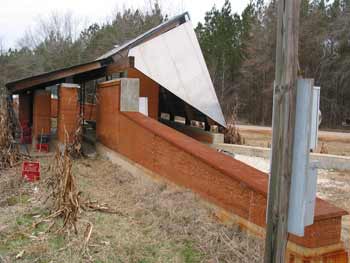
The Rural Studio has built several works of rammed-earth architecture including the Mason’s Bend Community Center (above), and the Sanders-Dudley House.
Heikkinen-Komonen
The Kahere Eila Poultry Farming School in Koliagbe, Guinea by Finnish architects Heikkinen-Komonen utilizes wood-frame technology in combination with weight-bearing walls made from a double layer of specially developed, stabilized earth-blocks won the Aga Khan Award for Architecture 2001. More earth projects can be found in their book, Heikkinen + Komonen.
RAMMED EARTH
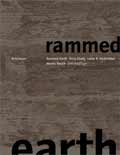
In Europe, Martin Rauch is regarded as one of the pioneers of modern technical and creative applications for traditional rammed earth construction. His work encompasses residential, hotel, ecclesiastical and industrial buildings, interior design and landscape design in Germany, Britain, Italy, Austria and Switzerland, including projects with Herzog & de Meuron and Schneider + Schumacher. His “Church of Reconciliation” in Berlin was the first load-bearing structure to be built with rammed earth in Germany in the last ninety years. Together with local architects Rauch constructed experimental family homes in Vorarlberg, Austria, and with Kienast Vogt & Partner, he designed a series of garden and park projects. The volume Rammed Earth: Terra Cruda by Martin Rauch and Otto Kapfinger is the definitive introduction to contemporary building with rammed earth.
Taos Fire

In the milleniua of occupation of the Taos Pueblo, this is likely not the first time that Pueblo residents sat atop their earthen structures to watch the forest burn.
WPA Earth Buildings
It is often forgotten that when the United States was dealing with the economic depression of the 1930’s, the federal government sponsored adobe home-building project in several locations across the country. One outstanding example was at Bosque Farms, a small farming community a few miles south of Albuquerque, New Mexico. The community was established to help relocate farm families devastated by the droughts that created the “Great Dust Bowl” of northern New Mexico, west Texas and Oklahoma. The government acceptance of earth building techniques during the Great Depression years of the 1930’s was also seen in Gardendale, Alabama, where a homestead program was instituted.
Alistair Knox
Occupation
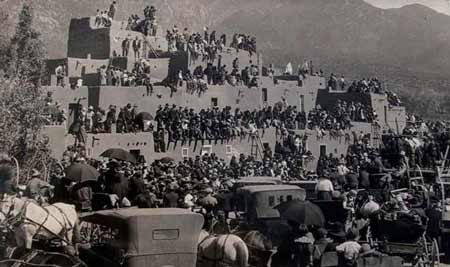
Throngs of anglo visitors overtake the Native American village of Taos Pueblo. One can only speculate the outcome of a reversed scenario.
Historic Albuquerque
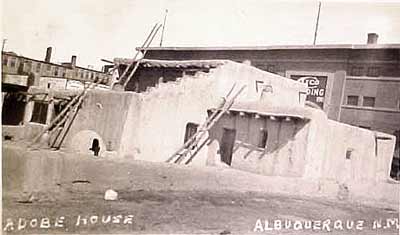
Adobe house in Albuquerque, circa 1926.
San Felipe Pueblo
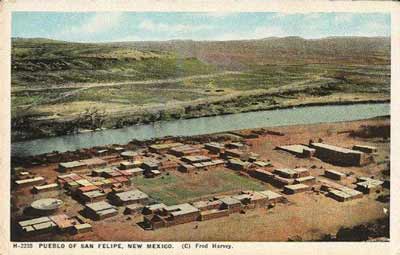
This postcard is captioned PUEBLO OF SAN FELIPE, NEW MEXICO. The back reads, The Pueblo lies on the east bank of the Rio Grande, about three miles from Bernalillo, and may be seen from the car windows en route to Albuquerque. The population is about 600. The church is one of the sights of the pueblo, having two towers and a large yard, the whole being enclosed with a high arched adobe wall. there is also the ever present Estufa or sacred meeting place where the chiefs congregate at times. The pueblo Indian while maintaining the mission churches still preserves many of the tribal customs. Circa 1915-1929
